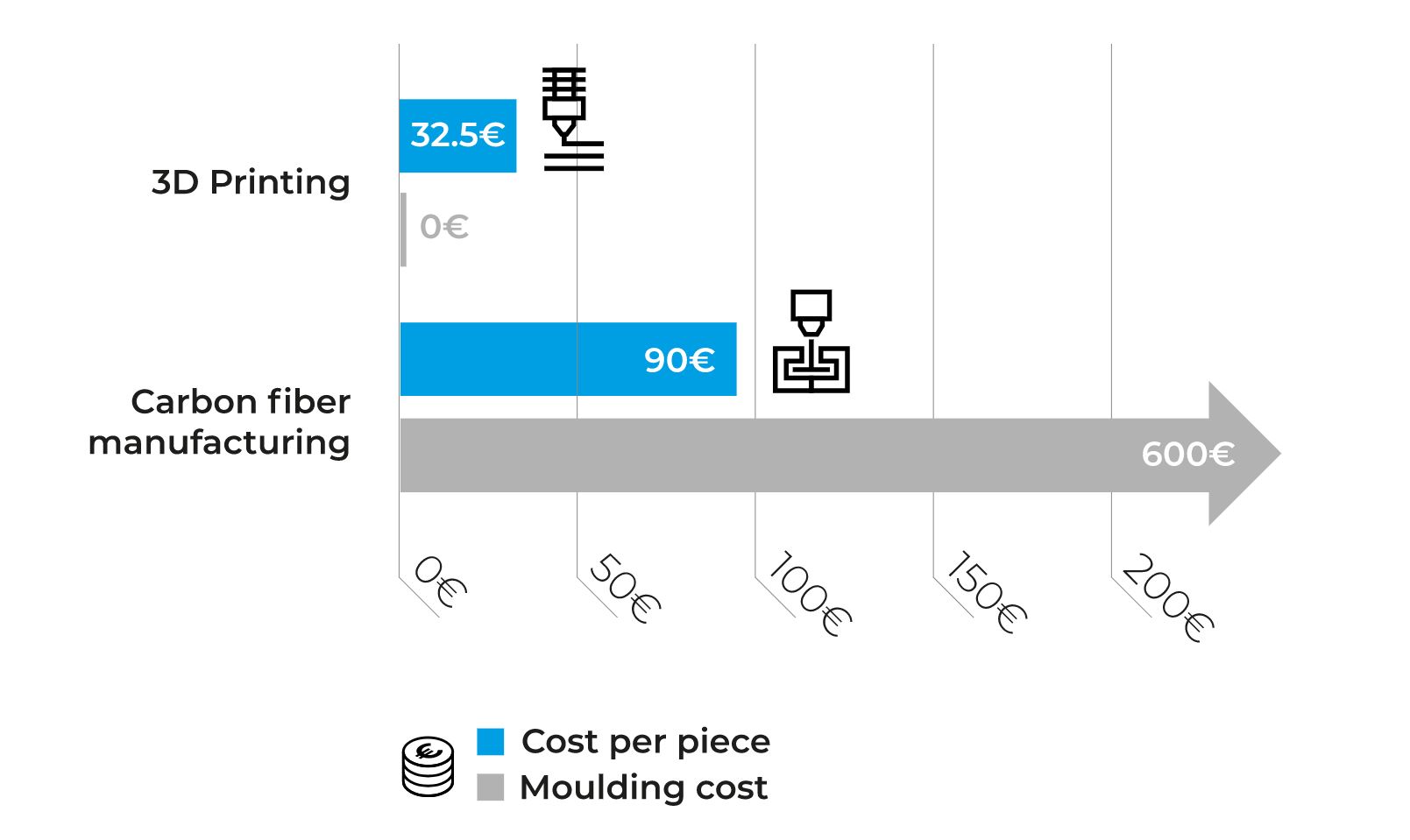Additive manufacturing is paying off for the Spanish student racing team ETSEIB Motorsport. The young engineers started to use 3D printing to increase efficiency. The team has fully incorporated AM to customize their electric cars for this year’s Formula Student.
To 3D print the customized end-use cooling ducts for brakes, the team uses the BCN3D Epsilon, an FFF 3D printer that incorporates a HEPA filter and an active carbon filter, combined with the Hotend X. The competing students print from PAHT CF 15, a high-temperature polyamide carbon fiber filament. Offering Young’s modulus of 8.3GPa, this material provides sufficient rigidity, as well as dimensional stability enabled by coping with high temperature, up to 180ºC. The Spanish students found this material ideal as these qualities make the brake cooling ducts withstand the high temperature and external impacts during the race.

3D printing versus the traditional method
The alternative would be carbon fiber cloth stacking, requiring more resources and budget. According to ETSEIB Motorsport’s calculations, using traditional methods would cost them EUR 690, while 3D printing a part costs them EUR 32.5, manufactured only in 8.5 hours.

The Spanish Engineering team also explained, that although carbon fiber cloth stacking parts are lighter, PA end-parts may last longer. Gravel or tire chips can damage the fiber components when the car is driven at high speed – the team finds the printed parts less fragile.

Speeding up by 3D printing
Triple Eight Race Engineering, an Australian motor racing team is also using 3D printing technology from HP to produce customized parts for its race cars. Australia-based 3D printing solutions provider, Triple Eight has been able to use HP Multi Jet Fusion (MJF) technology to 3D print a number of parts for a race car steering wheel, in partnership with EVOK3D. Designers claim, the 3D printing technology enables them to customize the wheel, optimize its weight, decrease costs and accelerate production time.
For faster car customization, Unplugged Performance, a specialist in upgrading Tesla vehicles is an early user of Formlabs’ new material, Tough 1500. The high impact strength of Formlabs’s new resin enables the safer and faster mounting of the sensors in the car’s bumper, according to the Tesla customizer company.
Read more about 3D printing in the automotive industry.
The nominations for the 2020 3D Printing Industry Awards are now open. Who do you think should make the shortlists for this year’s show? Have your say now.
Subscribe to the 3D Printing Industry newsletter for the latest news in additive manufacturing. For more content, follow us on Twitter and like us on Facebook.
Visit 3D Printing Jobs for a selection of roles in the additive manufacturing industry.
Featured Image shows ETSEIB Motorsport racing car with 3D printed cooling ducts. Photo via BCN3D.

